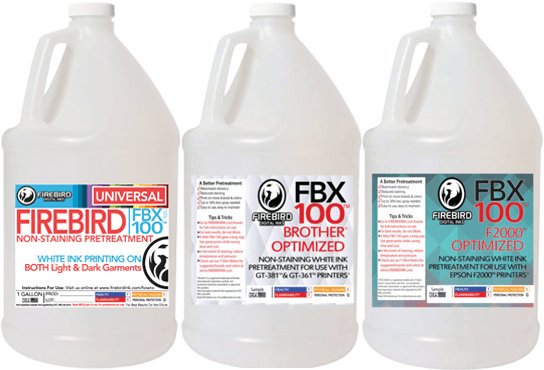Your shopping cart is empty!

DTG Pretreatment is needed to print white ink on to shirts when it comes to dtg printing. It also gives you more vibrant prints on light color shirts if you use pretreatment made for light color shirts.
It acts like a primer between the shirt and the ink. If you printed ink directly onto a dark shirt you would not be able to see the image at its full potential because the inks would be absorbed into the shirt. I guess its similar to hair dye. If you dyed your hair light brown but your hair is already black it would most likely not change the color of your hair unless you bleach your hair and then apply the dye. Now you will have the light brown you were looking for. Was that a bad example? Half of it lol. Well, hopefully, you understand what I am saying.
Anyways, It also reacts with the white ink. It makes it kind of tacky making it stick and quickly cure. This happens so that when you go to print your color ink on top it will stick instead of being all runny. You have probably seen this happen if you print with too much ink.
We downloaded the MSDS From ImageArmor Pretreat and it basically said it is 68-98 % water. and 1-20% calcium nitrates, which is basically Salt. Salt does have the potential to be a skin irritant. It also has 1-12% vinyl chloride copolymer, which is basically glue. To find out more about DTG Printing Pretreatment click the link.
Below is some of the information that it said on Image Armor Pretreat MSDS Sheet. I suppose that all the pretreatments are made basically the same. Maybe 1 uses a different type of salt or glue or a different brand of the chemical but the majority of it is water. Probably 95% Purified water and 2 and 3 % salt and glue.
3 Composition/Information on Ingredients
· Non-hazardous components:
7789-20-0 USP Purified Water 68-98%
· Chemical characterization: Mixtures
· Description: Mixture of substances listed below with non-hazardous additions.
· Dangerous Components:
15245-12-2 Calcium Nitrate
Skin Irrit. 2, H315; STOT SE 3, H335; Eye Irrit. 2B, H320
1-20%
9003-22-9 Vinyl Chloride Copolymer
Eye Irrit. 2B, H320
1-12%
· Additional information:
The exact percentages of the ingredients of this mixture are considered to be proprietary and are withheld in
accordance with the provisions of paragraph (i) of §1910.1200 of 29 CFR 1910.1200 Trade Secrets.

We use a DTG Pretreatment Machine. In the beginning, we use to us a Wagner spray bottle but it got really messy. The sprays are also inconsistent and you waste a lot of pretreatment. That is why we are happy that we upgraded.
After spraying the shirt with pretreament we then Heat press the shirt for 30 seconds and 10-second intervals after that until the shirt is dry.
If you have any comments or knowledge about dtg pretreatment please let us know in the comments below.
Leave a Comment